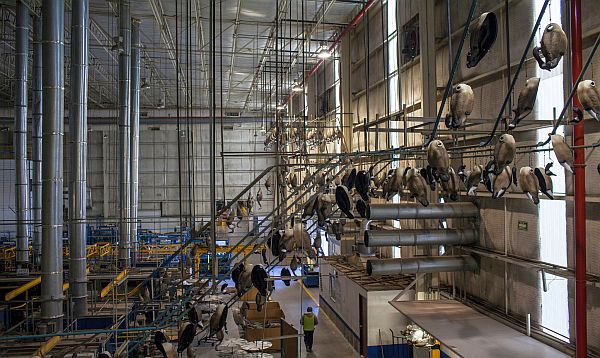Saltillo, Mexico Jason Sauey calls them lemmings all the American companies that rushed to China to make things like toys and toilet brushes, only to be searching now for alternatives in Mexico and the United States. His own family-owned plastics company, Flambeau, nearly made the same mistake around 2004, he said, when competitors contracting with China undercut prices and seized market share.
 |
Revenues at its Mexican plant have grown by 80 percent since 2010, according to company records, prompting a search for a second location near Mexico City. And in the past year, a dozen corporations have come to Flambeau and requested bids on projects worth tens of millions of dollars for things like smartphone cases and car parts.
"They're all looking for a new model,"" said Mr. Sauey at his offices in Middlefield, Ohio. "It's not just about cost; it's about speed of response and quality."
With labor costs rising rapidly in China, American manufacturers of all sizes are looking to Mexico with what economists describe as an eagerness not seen since the early years of the North American Free Trade Agreement in the 1990s. From border cities like Tijuana to the central plains where new factories are filling farmland, Mexican workers are increasingly in demand.
American trade with Mexico has grown by nearly 30 percent since 2010, to $507 billion annually, and foreign direct investment in Mexico last year hit a record $35 billion. Over the past few years, manufactured goods from Mexico have claimed a larger share of the American import market, reaching a high of about 14 percent, according to the International Monetary Fund, while China's share has declined.
"When you have the wages in China doubling every few years, it changes the whole calculus," said Christopher Wilson, an economics scholar at the Mexico Institute of the Woodrow Wilson International Center for Scholars in Washington. "Mexico has become the most competitive place to manufacture goods for the North American market, for sure, and it's also become the most cost-competitive place to manufacture some goods for all over the world."
Many American companies are expanding in Mexico including well-known brands like Caterpillar, Chrysler, Stanley Black & Decker and Callaway Golf adding billions of dollars in investment and helping to drive the economic integration that President Obama and President Enrique Peña Nieto have both described as vital to growth.
As that happens, some companies are cutting back in China and heading to Mexico to manufacture an array of products, like headsets (Plantronics); hula hoops (Hoopnotica); toilet brushes (Casabella); grills and outdoor furniture (Meco Corporation); medical supplies (DJO Global); and industrial cabinets (Viasystems Group).
And while in some cases a move to Mexico is tied to job cuts in the United States, economists say that the American economy benefits more from outsourcing manufacturing to Mexico than to China because neighbors tend to share more of the production. Roughly 40 percent of the parts found in Mexican imports originally came from the U.S., compared with only 4 percent for Chinese imports, according to the National Bureau of Economic Research, a private research group.
Read more at NYTimes.com.


